
Heavy Rain Brought Spectacular Waterfalls to Australia’s Most Famous Rock
A rare deluge at Uluru attracted tourists, locals, and a whole lot of frogs.
Uluru-Kata Tjuta National Park, home of the titular big red desert rock in the middle of Australia, gets about a foot of rain a year. On Sunday, March 21, it got a big chunk of its annual dose in under 24 hours, resulting in spectacular sights around the sandstone behemoth that is Uluru.
“While it rains, and for around 30 minutes afterward, waterfalls cascade down the rock face,” says a Parks Australia spokesperson. At 1,142 feet (348 meters), Uluru stands taller than the Chrysler building. During the deluge, water ran down channels in the rock, drawing meandering lines all the way to the flat ground around it.
Locals and tourists alike came running. “When it rains, all of the residents of Yulara [the resort town nearby] flock to Uluṟu to catch a glimpse of the waterfalls,” says the spokesperson, “so you end up seeing more resort staff at ‘the rock’ than in the resort itself.”
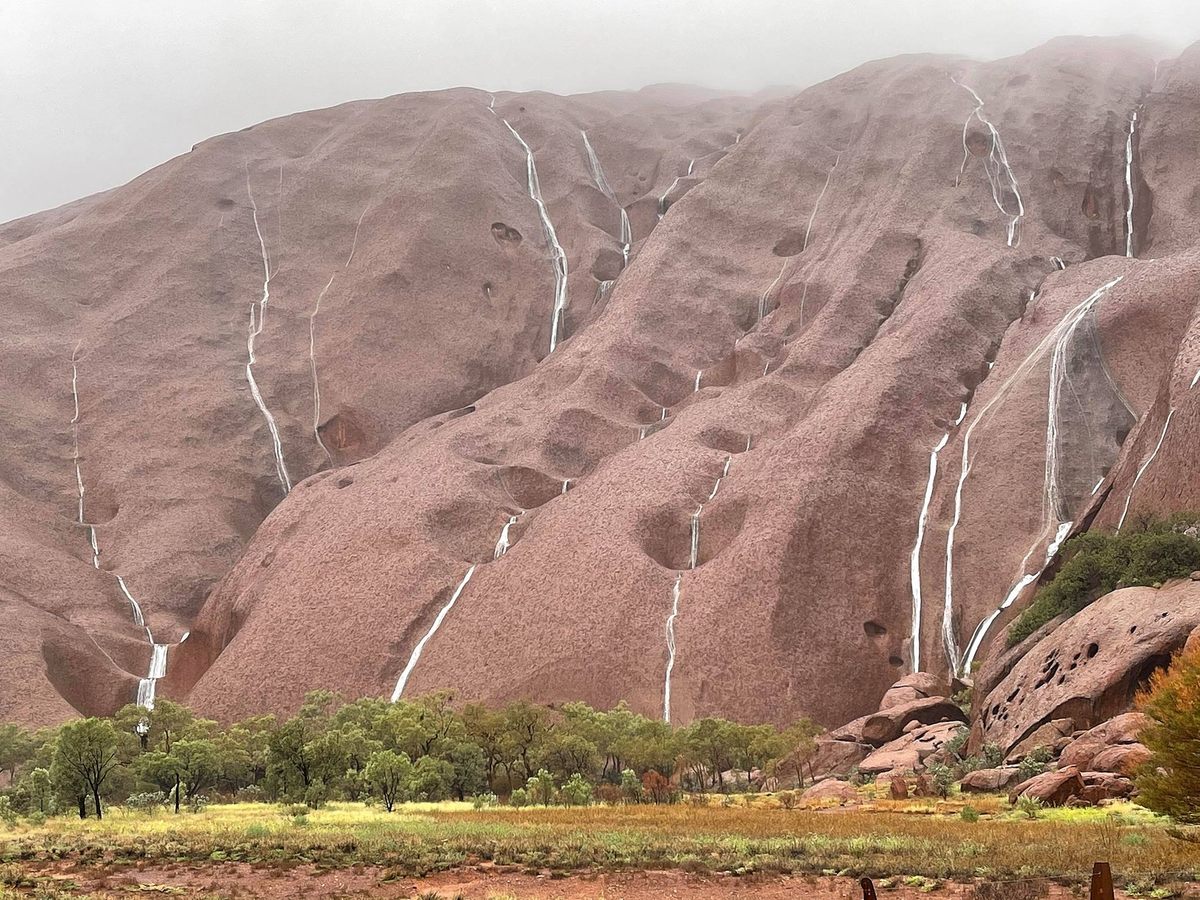

Uluru may mark the center of a harsh desert, but when there’s rain, it makes an even more dramatic entrance as visitors approach. “Tourists often laugh at our ‘floodway’ road signs around the National Park; being that it is usually so hot and dry here,” says the spokesperson. “But once it rains, the purpose of these signs becomes all too obvious. Sections of the roads turn into fast-flowing creeks, created by the run-off from our rock formations.”
Just after Christmas in 2016, more severe flash flooding forced Uluru-Kata Tjuta National Park to close. That was considered a “once in 50 years” event. During this week’s rain, the park remained open. One major difference between then and now: In 2016, tourists were allowed to climb to the top of the rock. Now, climbing is forbidden.
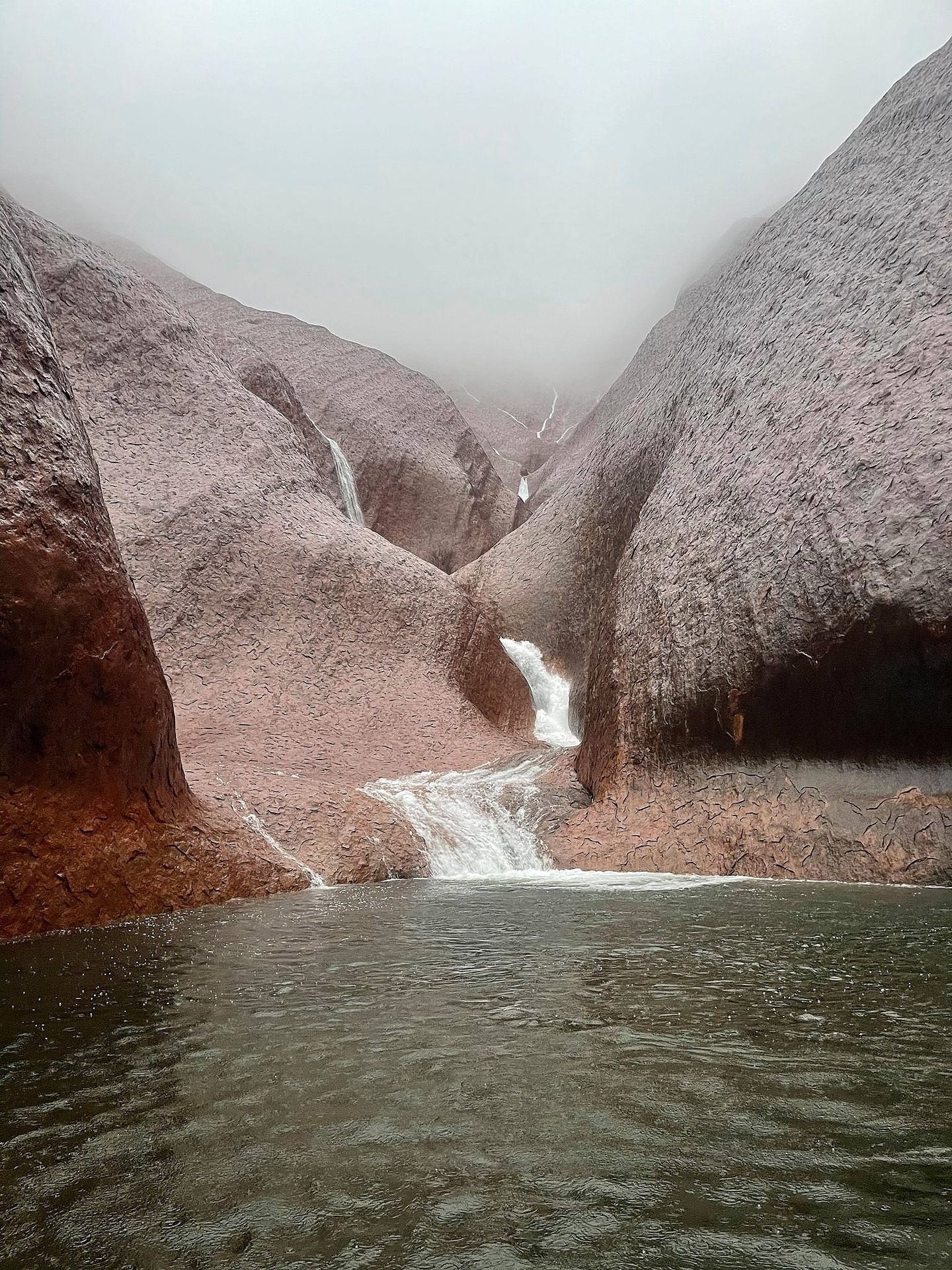
Uluru, one of the most sacred Aboriginal sites in Australia, closed to climbers on October 26, 2019. For decades prior to the closure, the Anangu, who have lived at Uluru for over 10,000 years, requested that tourists refrain from the popular practice. The park has been jointly managed by the Anangu and the Australian government since 1985.
To the Anangu, water is a key part of Tjukurpa, the set of moral and spiritual foundations that their ancestral beings established during the creation period. “The Pitjantjatjara word for water is kapi,” says the Parks Australia spokesperson. “The An̲angu see kapi as being very sacred, as it gives life to the land.” That life comes in the form of “[v]ibrant green vegetation, flowers of every color of the rainbow blooming—not something people imagine when they think of central Australia.”
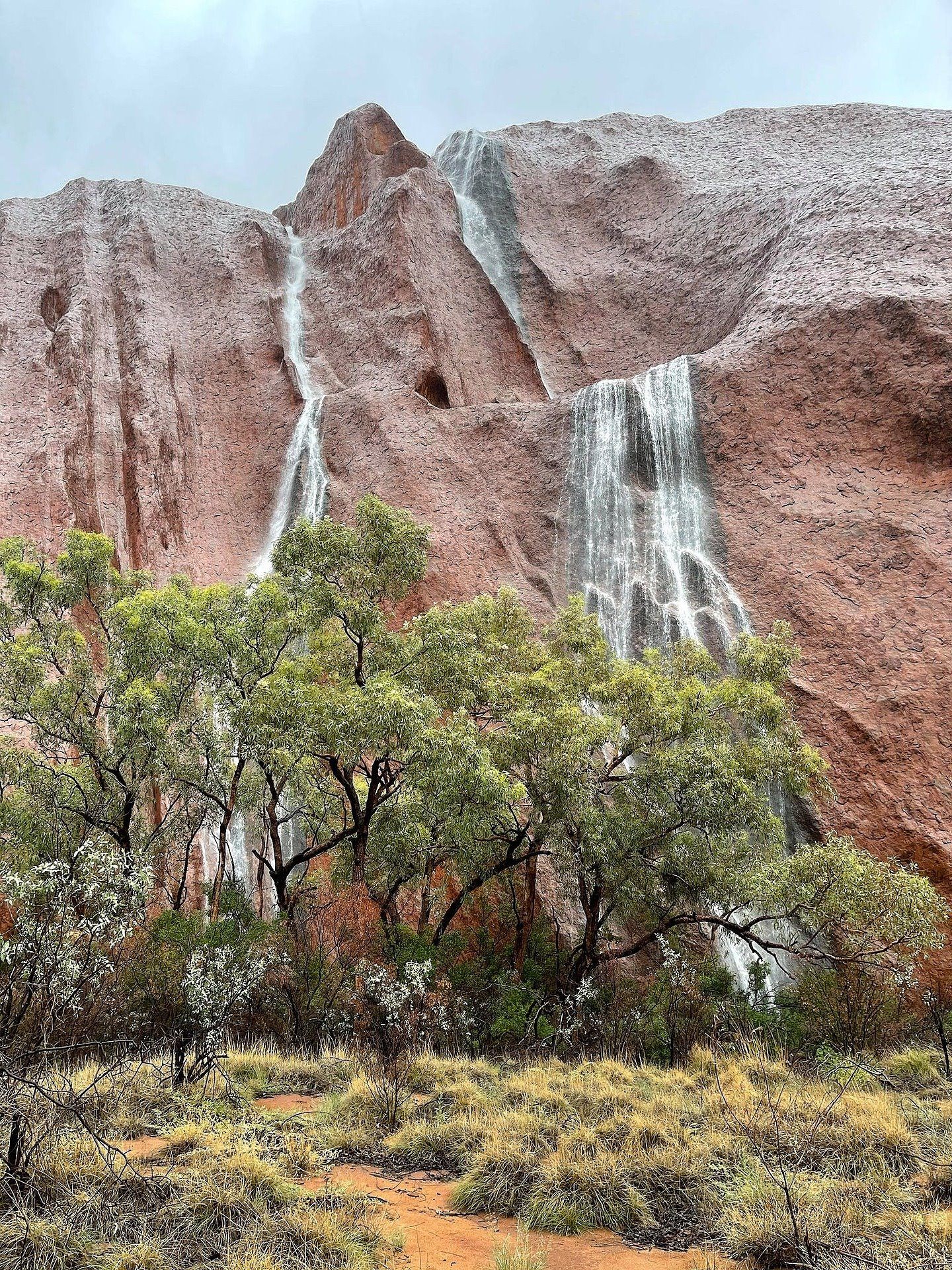
All that water did indeed lead to life. Parks Australia reports that “an army of burrowing frogs descended upon our cultural center to feed upon the hundreds of centipedes that had also come out due to the rain.” There are not one but four species of burrowing frog at Uluru: Spencer’s burrowing frog, the desert trilling frog, Main’s frog, and the desert spadefoot. They live underground, but heavy rain coaxes them to the surface for a whirlwind of hydrating, eating, and mating.
Rain also means the merciful disappearance of another critter: Uluru’s ever-present, “very friendly” flies. Usually, tourists at the rock quickly become accustomed to the “Aussie salute,” or constantly waving your hand in front of your face to keep the flies at bay. On rainy days, there’s something else to salute.

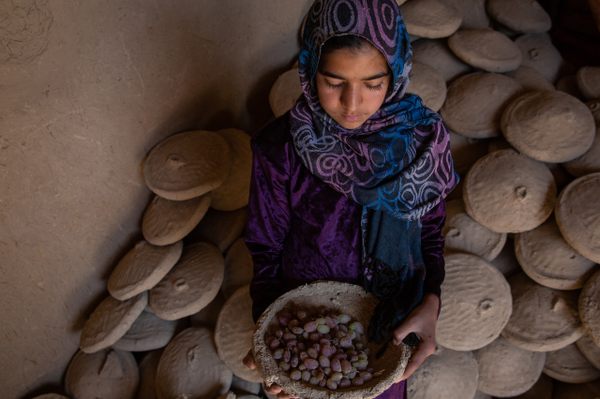
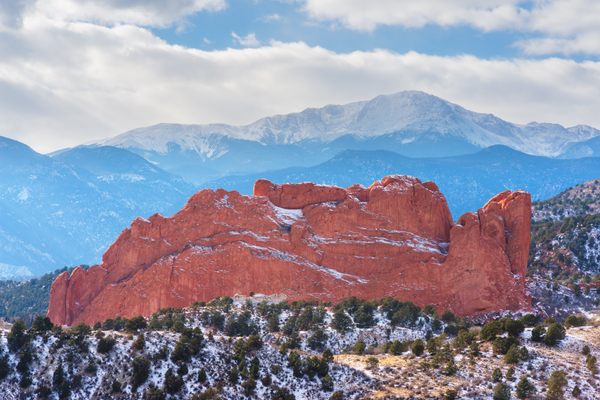
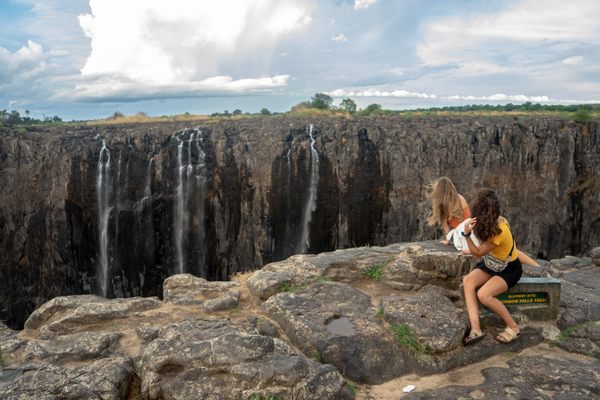
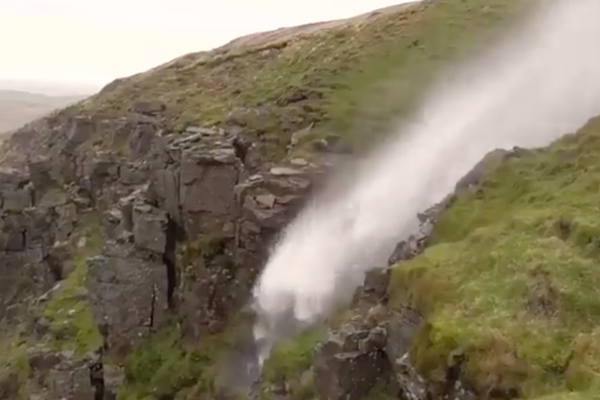











Follow us on Twitter to get the latest on the world's hidden wonders.
Like us on Facebook to get the latest on the world's hidden wonders.
Follow us on Twitter Like us on Facebook